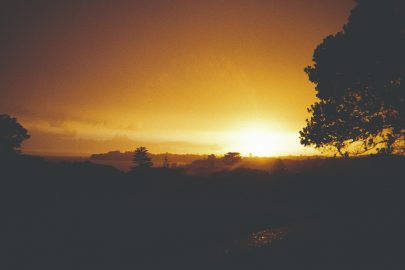Apr 1, 2015 etc
This column was first published in the March 2015 issue of Metro. Illustration by Tane Williams.
It’s telling that moving overseas is termed joining the “brain drain”. “Drain” implies loss but also inevitability. We don’t blame water for being pulled down the plughole — but in the absence of a solid stopper, that’s what it’s going to do.
In January, I left New Zealand, perhaps for good. I applied for a job in Sydney and, unexpectedly, I got it. One week I was staring down my seventh year in Wellington; the next I was moving to Australia. It was disconcerting how fast it happened — the plug had been pulled.
But as I got rid of the books and CDs I’d carted from flat to flat, it wasn’t my life in Wellington that I mourned, but the potential of one in Auckland. For 18 months, I’d wanted to move, and only partly because my boyfriend lives there. (The small pool of people to date is one reason Wellingtonians leave; the realisation that I had no exes in Sydney to run into was exhilarating.)
The Prime Minister’s description of Wellington as a “dying city” sparked outrage in the capital. But for too long it had felt to me like it was in its final throes, reliving its golden years with a scrapbook of mentions in Vogue and Lonely Planet, quoting the same anecdotes (Miranda Kerr, a regular at Maranui Cafe!) and accolades (the coolest little capital!) that had grown thinner with each retelling.
Meanwhile, iconic venues have closed: its trendiest music festival, Camp A Low Hum, finished last year, and its biggest, Homegrown, is always the same. They sold barely more than half the tickets to this year’s Rugby Sevens. They still have WOW — but how long before Auckland grabs it?
Then there’s the Miramar movie industry. You wouldn’t know it from the polystyrene monuments to Peter Jackson littering the airport, but What We Do in the Shadows was the best advertisement for the capital in a long time, as the Dominion Post recognised when it named Taika Waititi one of its Wellingtonians of the Year. Then he announced he was moving to the Bay of Plenty — to be closer to Auckland.
I spent a lot of time in Auckland last year, and every time I visited there was something new — either a physical development, like Britomart or Ponsonby Central, or a project that someone was giving a go to see if it stuck. If Wellington is sure of what it is, Auckland is sure of what it wants to be.
Of course, my aversion to the capital is partly because it’s simply time for me to move on. When you’re in your 20s and the world is as wide as your savings and employability will allow, it’s natural to be restless. To be a twenty-something here means the FOMO that comes from living at the bottom of the world gets to you. You thirst to travel or prove yourself on an international stage. But Auckland is at least doing its best to keep us here.
The rest of New Zealand seems content to accept this country is no place in which to be young and hungry and ambitious, placating itself with “They’ll be back when they want kids of their own!” as though that were your back-up plan for when you’ve accepted the upper limits of what life has in store for you.
Auckland is similar to my new home, Sydney: both coastal, “global” cities with large migrant communities and good “liveability” rankings. But Sydney is home to as many people as there are in all of New Zealand. In Auckland, the pool is smaller but not suffocating.
More important, there’s change, innovation, opportunity — and living there means you get to play a part in that. Just look at younger generations’ input to the Unitary Plan — on the decisions being made now to shape the city of the future. The momentum is there, spinning like a potter’s wheel, ready for you to get stuck in.
Read more:
“Auckland can be its own worst enemy.” Simon Wilson on life as a Wellington transplant, 2007





